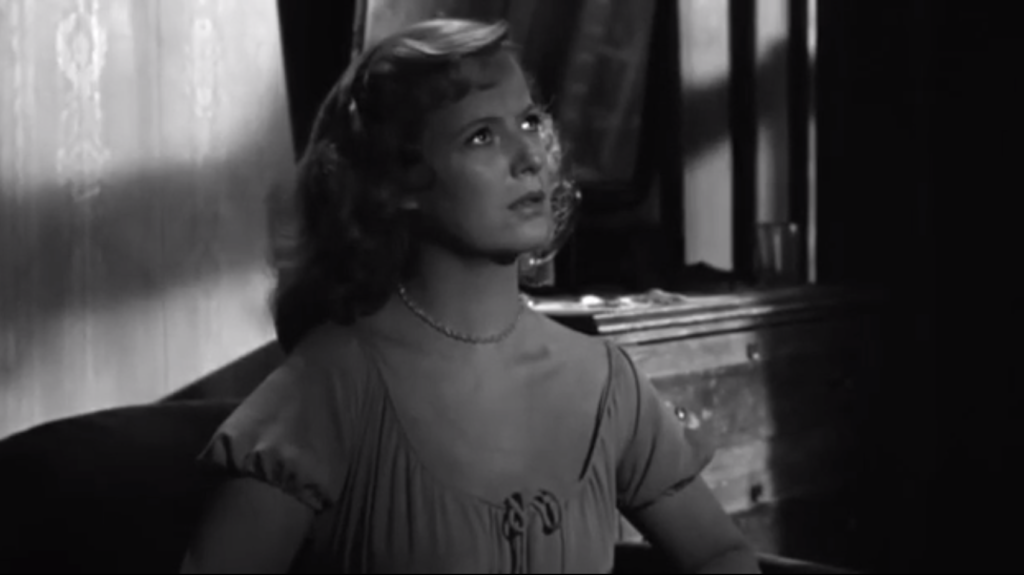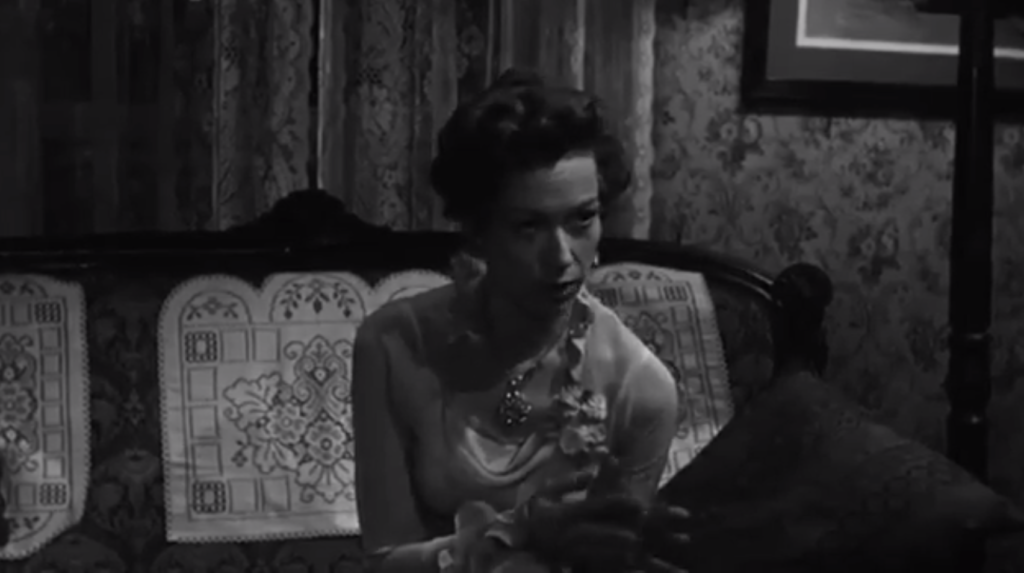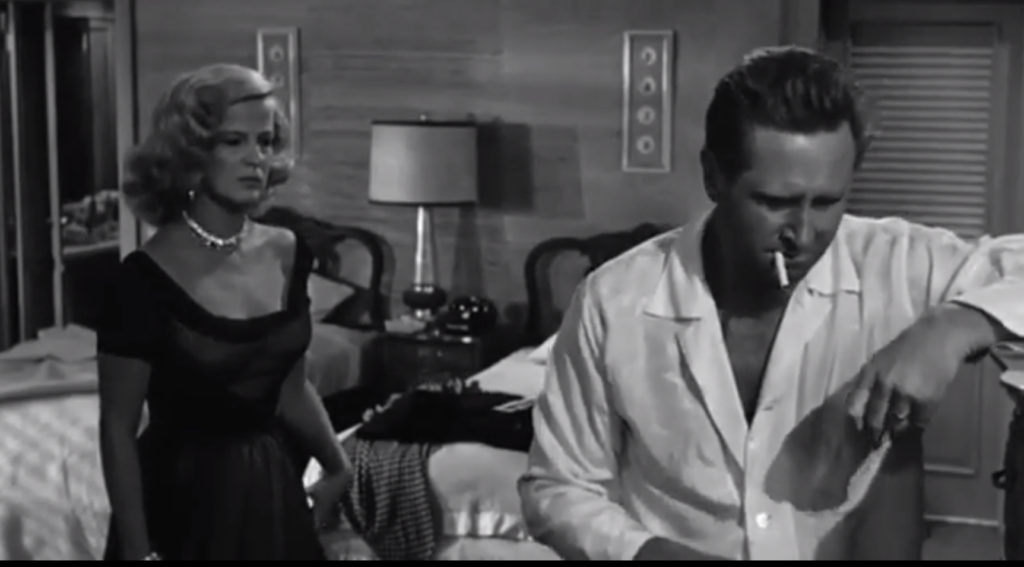Goddess, The (1958)
“I’m going to Hollywood someday — I am, I am!”
|
Synopsis: |
|
Genres, Themes, Actors, and Directors:
Response to Peary’s Review: The Goddess is primarily notable for Stanley’s “powerhouse performance” — indeed, it’s remarkably easy to forget that Stanley is a bit too old to play the teenage protagonist, or that she isn’t quite sexy enough to pass for a Hollywood bombshell; looking into Stanley’s face, we see all the bitterness of Emily Ann/Rita’s unhappy, lonely childhood continuing to express itself. Unfortunately, Emily Ann/Rita (the character changes her name, as so many do, once she arrives in Hollywood) is never fully fleshed out — we’re given many powerful vignettes from her life, rather than any cohesion or depth. At one point, for instance, the script shifts suddenly from Rita accepting God in front of her religious mother (nicely played by Betty Lou Holland), to Rita throwing her mother out of the house with no obvious explanation. These frequent lapses in logic hurt would could have been a devastating character study, but instead remains an interesting — yet flawed — performance piece for Stanley. Note: Although many have speculated that Chayefsky modeled his script after the rise and imminent fall of Marilyn Monroe, Chayefsky flatly denied this association. Nonetheless, parallels continue to be made by many — including Peary. Redeeming Qualities and Moments:
Must See? Categories
Links: |




One thought on “Goddess, The (1958)”
A must.
The parting scene is one of simple normalcy; it puts what preceded in perspective. (Conversely, the opening image is one of the underprivileged under a billboard of promise.) Though the title states the film is about a person, writer Chayefsky – as in ‘The Hospital’, ‘Network’, ‘The Catered Affair’ – is taking on another ‘institution’: Hollywood. His point seems to be that it’s no place for someone who has no emotional center (the implication is that a high percentage of such people wind up there). Stanley’s character is an empty shell (in what is labeled ‘Part One’, we see why); she sets out to sponge up everything, yet absorbs nothing. We see her manipulate others in order to get ahead – and from that point, we look at her life as if reading clippings in a scrapbook.
One of many terrific scenes with Stanley opens ‘Part Two’ and is spot-on, as her character – sitting with another actress in a restaurant – can’t stop looking around to see if she’s being seen. That scene alone speaks volumes.
I don’t find the film lacking in cohesion. To me, there is particular power in gaps: in the depiction of her first marriage, there’s a jump-cut from Steven Hill saying “I’ll try to make this (marriage) work out.” to “I hope I get killed (in the war).”…to which Stanley replies, “I hope you do, too.”; the scene in which Stanley suddenly kicks her mother (and, by extension, God) out reveals that ‘Rita’ is only interested in what feeds her self-serving needs. (Note how she later hangs onto the doting secretary Elizabeth Wilson.)
Though it’s Stanley’s film all the way (and, interestingly, we never see her character – an actress – acting), the three men who figure in her life are also drawn well. We see one of them learn what ‘Rita’ does not: how to face life.